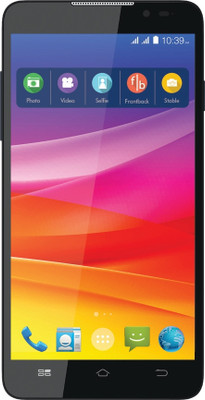Welcome to Android 5.0 Lollipop—the largest and most ambitious release for Android yet!
This release is packed with new features for users and thousands of new APIs for developers. It extends Android even further, from phones, tablets, and wearables, to TVs and cars.
For a closer look at the new developer APIs, see the
Android 5.0 API Overview. Or, read more about Android 5.0 for consumers at
www.android.com.
Note: The Android 5.1 Lollipop MR1 update is available with additional features and fixes. For more information, see the
Android 5.1 API Overview.
Material design
Android 5.0 brings
Material design to Android and gives you an expanded UI toolkit for integrating the new design patterns easily in your apps.
New
3D views let you set a z-level to raise elements off of the view hierarchy and cast
realtime shadows, even as they move.
Built-in
activity transitions take the user seamlessly from one state to another with beautiful, animated motion. The material theme adds transitions for your activities, including the ability to use
shared visual elements across activities.
To replay the movie, click on the device screen
Ripple animations are available for buttons, checkboxes, and other touch controls in your app.
You can also define vector drawables in XML and animate them in a variety of ways. Vector drawables scale without losing definition, so they are perfect for single-color in-app icons.
A new system-managed processing thread called
RenderThread keeps animations smooth even when there are delays in the main UI thread.
Performance focus
Android 5.0 provides a faster, smoother and more powerful computing experience.
Android now runs exclusively on the new
ART runtime, built from the ground up to support a mix of ahead-of-time (AOT), just-in-time (JIT), and interpreted code. It’s supported on ARM, x86, and MIPS architectures and is fully 64-bit compatible.
ART improves app performance and responsiveness. Efficient garbage collection reduces the number and duration of pauses for GC events, which fit comfortably within the v-sync window so your app doesn’t skip frames. ART also dynamically moves memory to optimize performance for foreground uses.
Android 5.0 introduces platform support for
64-bit architectures—used by the Nexus 9's NVIDIA Tegra K1. Optimizations provide larger address space and improved performance for certain compute workloads. Apps written in the Java language run as 64-bit apps automatically—no modifications are needed. If your app uses native code, we’ve extended the NDK to support new ABIs for ARM v8, and x86-64, and MIPS-64.
Continuing the focus on smoother performance, Android 5.0 offers improved A/V sync. The audio and graphics pipelines have been instrumented for more accurate timestamps, enabling video apps and games to display smooth synchronized content.
Notifications
Notifications in Android 5.0 are more visible, accessible, and configurable.

Varying notification details may appear
on the lock screen if desired by the user. Users may elect to allow none, some, or all notification content to be shown on a secure lock screen.
Key notification alerts such as incoming calls appear in a
heads-up notification—a small floating window that allows the user to respond or dismiss without leaving the current app.
You can now add
new metadata to notifications to collect associated contacts (for ranking), category, and priority.
A new media notification template provides consistent media controls for notifications with up to 6 action buttons, including custom controls such as "thumbs up"—no more need for RemoteViews!
Your apps on the big screen
Android TV provides a complete TV platform for your app's big screen experience. Android TV is centered around a simplified home screen experience that allows users to discover content easily, with personalized recommendations and voice search.
With Android TV you can now
create big, bold experiences for your app or game content and support interactions with game controllers and other input devices. To help you build cinematic, 10-foot UIs for television, Android provides a
leanback UI framework in the


 Varying notification details may appear on the lock screen if desired by the user. Users may elect to allow none, some, or all notification content to be shown on a secure lock screen.
Varying notification details may appear on the lock screen if desired by the user. Users may elect to allow none, some, or all notification content to be shown on a secure lock screen. 


